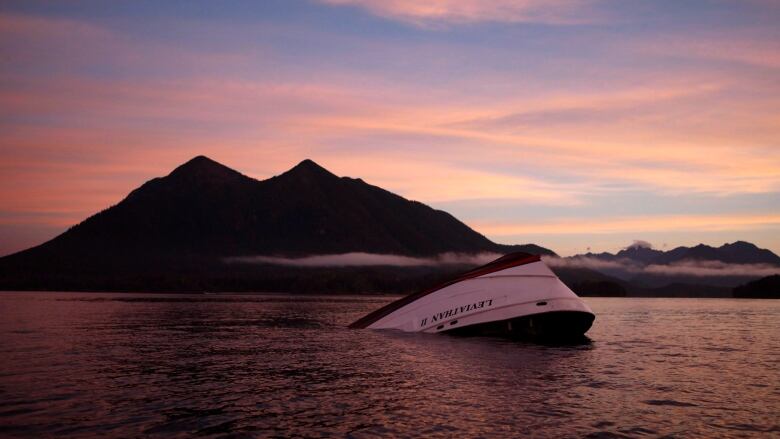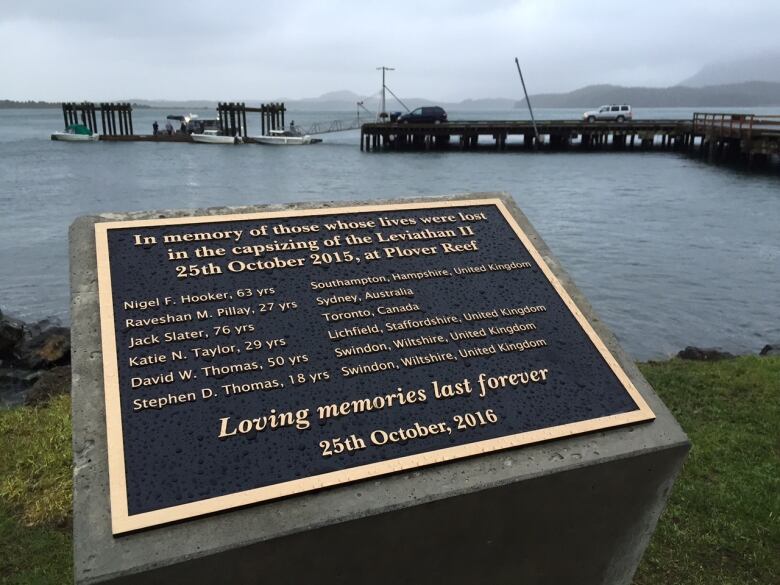Report into Tofino whale-watching tragedy recommends changes to safety practices
6 people died and 21 were rescued when the whale-watching boat capsized in 2015

Tour boat operators need do a better job identifying hazardous waves, according to an investigationinto the deadly capsizing of the Leviathan II whale-watching boat near Tofino, B.C., in 2015.
The recommendation is one of three made by the Transportation Safety Board of Canada on Wednesday.
Six people died and 21 had to be rescued when the Tofino-based tour boat flipped over after being struck by a large, breakingwave.

"It's time for Transport Canada to work with whale-watching companies and other passenger vessel operators to ensure the experience they offer is not just thrilling, but as safe as it can be," said TSB chairperson Kathy Fox.
'Every second counts'
"When people find themselves in cold water, every second counts. Our recommendations today are aimed at putting in place measures to avoid accidents in the first place, and to expedite rescue efforts if an accident occurs."
The TSB is also recommending that passenger vessel operators across Canada be required to adopt risk-management processes to identify hazards and the strategies to deal with them.

The third recommendation calls for all commercial passenger vessels operating beyond sheltered water to carry emergency locator beacons which would automatically activate in the event of a capsizing.
Crew members on theLeviathan II didn't have time to send a distress call and it was only by chance that they were
able to activate a flare after the boat tipped, alerting nearby boaters.
Search and rescue responders were not made aware of the accident until 45 minutes after it happened.
Board members stopped short of recommending tour boat passengers be required to wear life-jackets.
"The risk management process should indicate when to wear life-jackets," said Fox. "There's no doubt that if the passengers had been wearing life-jackets...there may have been fewer fatalities, but wearing life-jackets could be dangerous inside the cabin."
According to the investigationthe Leviathan II did not have an issue with stability. Infact the vessel was found to have exceeded stabilitystandards.
Transport Canada, the body responsible for settingand regulating transportation safety policies,said it welcomes the TSB'srecommendations and will reviewthe report within the required 90-day time period.
"Given the incident is the subject of current or pending legal action, it would be inappropriate to comment further," said Transport Canada spokeswoman Natasha Gauthier.
Wave as high as the bridge
ClintonRebeiro, the investigator in charge for the board, said the wave that hit the Leviathan II was about the height of
the top of the bridge on the boat.
Survivors described being thrown into the ocean without life-jackets, grabbing hold of a single life-ring that floated in the
waves.
Court documents filed last year by the vessel's owner in response to a civil lawsuit describe the event as an"act of God" that could not have been reasonably predicted.












_(720p).jpg)


 OFFICIAL HD MUSIC VIDEO.jpg)
.jpg)



























































































